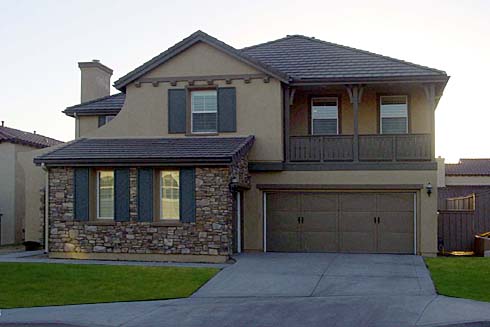COMMON AREAS
Exploring Common Areas in Real Estate: Understanding Their Significance
Common areas in real estate are spaces within a property that are shared by multiple tenants or property owners. Understanding the concept of common areas is crucial for property owners, tenants, and real estate professionals alike, as these spaces often play a significant role in shaping the overall living experience and value of a property.
Defining Common Areas
Common areas encompass spaces within a property that are not owned or leased by a specific individual or entity. These areas are intended for shared use and are typically maintained and managed by the property owner or a homeowners' association in the case of residential developments. Common areas can include lobbies, hallways, elevators, parking lots, recreational facilities, and other shared amenities within a property.
Significance of Common Areas
For Property Owners
Enhanced Property Value:
Well-maintained and attractive common areas can enhance the overall appeal and value of a property, attracting potential buyers or tenants.
Maintenance Responsibility:
Property owners are usually responsible for the upkeep and maintenance of common areas, ensuring that these spaces remain inviting and functional.
For Tenants
Amenities and Facilities:
Common areas often include amenities such as gyms, swimming pools, and communal spaces, enhancing the living experience for tenants.
Amenities and Facilities:
Common areas often include amenities such as gyms, swimming pools, and communal spaces, enhancing the living experience for tenants.
Community Engagement:
These shared spaces provide opportunities for social interaction and community engagement among residents.
For Real Estate Professionals
Marketing and Sales:
Common areas can be a key selling point for real estate professionals, as attractive shared amenities can make a property more appealing to potential buyers or tenants.
Property Management:
Understanding the management and maintenance of common areas is essential for property managers and real estate professionals involved in leasing and property maintenance.
Management and Maintenance of Common Areas
Effective management and maintenance of common areas are essential for preserving the functionality and appeal of these shared spaces. This involves regular upkeep, cleaning, repairs, and adherence to any rules or regulations governing the use of common areas. Property owners or homeowners' associations often establish guidelines and collect maintenance fees to fund the upkeep of these spaces.
Legal and Regulatory Considerations
Understanding the legal framework governing common areas is crucial for property owners and tenants. This includes aspects such as the allocation of maintenance responsibilities, rules for the use of common areas, and any legal implications related to these shared spaces. Additionally, in the case of condominiums or planned developments, there are often specific regulations and bylaws that govern the management and use of common areas.
Conclusion
In conclusion, common areas play a vital role in shaping the living experience and overall value of a property. Whether for property owners, tenants, or real estate professionals, a comprehensive understanding of common areas is essential for effective property management, community engagement, and ensuring the overall appeal of a real estate asset.
By recognizing the significance of common areas and implementing strategies for their effective management and maintenance, property owners and real estate professionals can create an environment that enhances the desirability and value of the property, while also fostering a sense of community and shared living experience for tenants and residents.
MORE REAL ESTATE TERMS
A, B, C, D, E, F, G, H, I, J, K, L, M, N, O, P, Q, R, S, T, U, V, W, X, Y, Z
Featured New Home

Featured Mortgage Brokers
- SUMMIT MORTGAGE INC, FORT WAYNE, IN
8614 SAINT JOE RD
FORT WAYNE, IN 46835 - Blue Square Mortgage LLC, mortgage broker in Seattle, WA
4212 33rd Ave W
Seattle, WA 98199 - TOP FLITE FINANCIAL INC, WATERFORD, MI
5663 HIGHLAND RD
WATERFORD, MI 48327 - PROFICIO MORTGAGE VENTURES LLC, BRUNSWICK, OH
2950 WESTWAY DR STE 101
BRUNSWICK, OH 44212 - BANK OF NORTH CAROLINA, CHARLOTTE, NC
7422 CARMEL EXECUTIVE PARK DR
CHARLOTTE, NC 28226